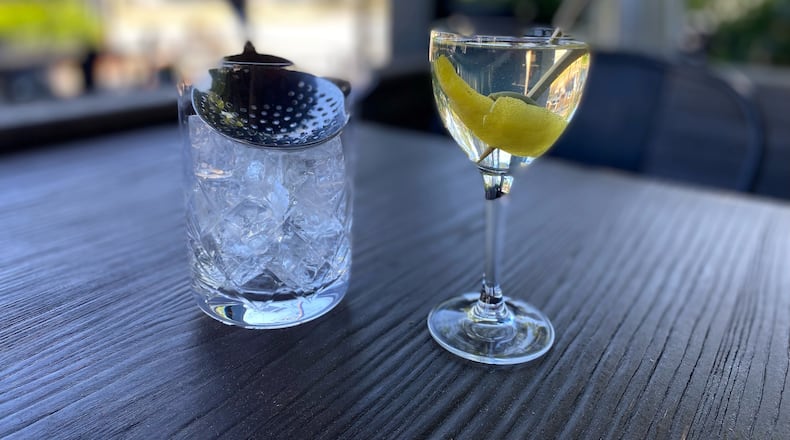With its conical glass and olive on a toothpick, the martini arguably is the most recognized cocktail in the world.
But, although martinis have been popular for more than 100 years, we still get asked a lot of questions about how they’re made, and how they should be ordered.
While personal preference has a lot to do with your enjoyment of the drink, there seems to be confusion about where to start. For instance, we generally prefer a “wet” martini, with a higher concentration of vermouth in the mix. But, sometimes, a “dry” martini (less vermouth), with one of our favorite gins, might be the right call.
Here’s a primer to help you navigate the various types of martinis.
50/50: This used to be called just a martini. It was the popular style from the mid-1800s to the beginning of the 20th century. It is equal amounts of gin or vodka and dry vermouth, with a couple of dashes of orange bitters.
Dry martini: This is a 2:1 ratio of gin or vodka to dry vermouth (the less sweet variety). We sometimes call this a modern martini, though it just as well could be called an art deco martini, as this proportion was made popular in the 1910s and 1920s.
Extra dry: This is where the ratio of gin or vodka to vermouth gets around 7:1 or even — gasp! — 9:1. Made popular after World War II, this was where the word “dry” went from referring to the type of vermouth used, to the lack of vermouth. This gave rise in the latter half of the 20th century to suggestions of rinsing the cocktail glass with vermouth and tossing out the excess, or waving the bottle of vermouth over the glass and pouring in cold gin.
Stirring versus shaking: Despite 007′s requested way of making the cocktail, we will argue that stirring is the preferred method of mixing a martini, another pleasant result of the cocktail renaissance of the past three decades. In the early 2000s, one Louisville food critic made it known that her martini was well-made if it had ice shards floating on top, the result of aggressive shaking. In our opinion, that is an overdiluted drink, with an unpleasant texture. Stirring your martini with ice for about 30 seconds results in a delicious cocktail that has a silky texture.
Garnishes: We feel any martini can benefit from a long swath of lemon peel, cut with a y-shaped vegetable peeler, and squeezed with the skin side pointed over the drink. The lemon oil floating on top adds a bright citrus accent.
Olive: Iconic for its almost singular use in the martini, this is a savory treat for a dry cocktail, as opposed to a cherry for sweeter drinks, such as the Manhattan.
Onion: If you leave out the orange bitters, and substitute a small, pickled onion for the olive, you have turned your martini into a Gibson.
Sign up for the AJC Food and Dining Newsletter
Read more stories like this by liking Atlanta Restaurant Scene on Facebook, following @ATLDiningNews on Twitter and @ajcdining on Instagram.
About the Author
The Latest
Featured
